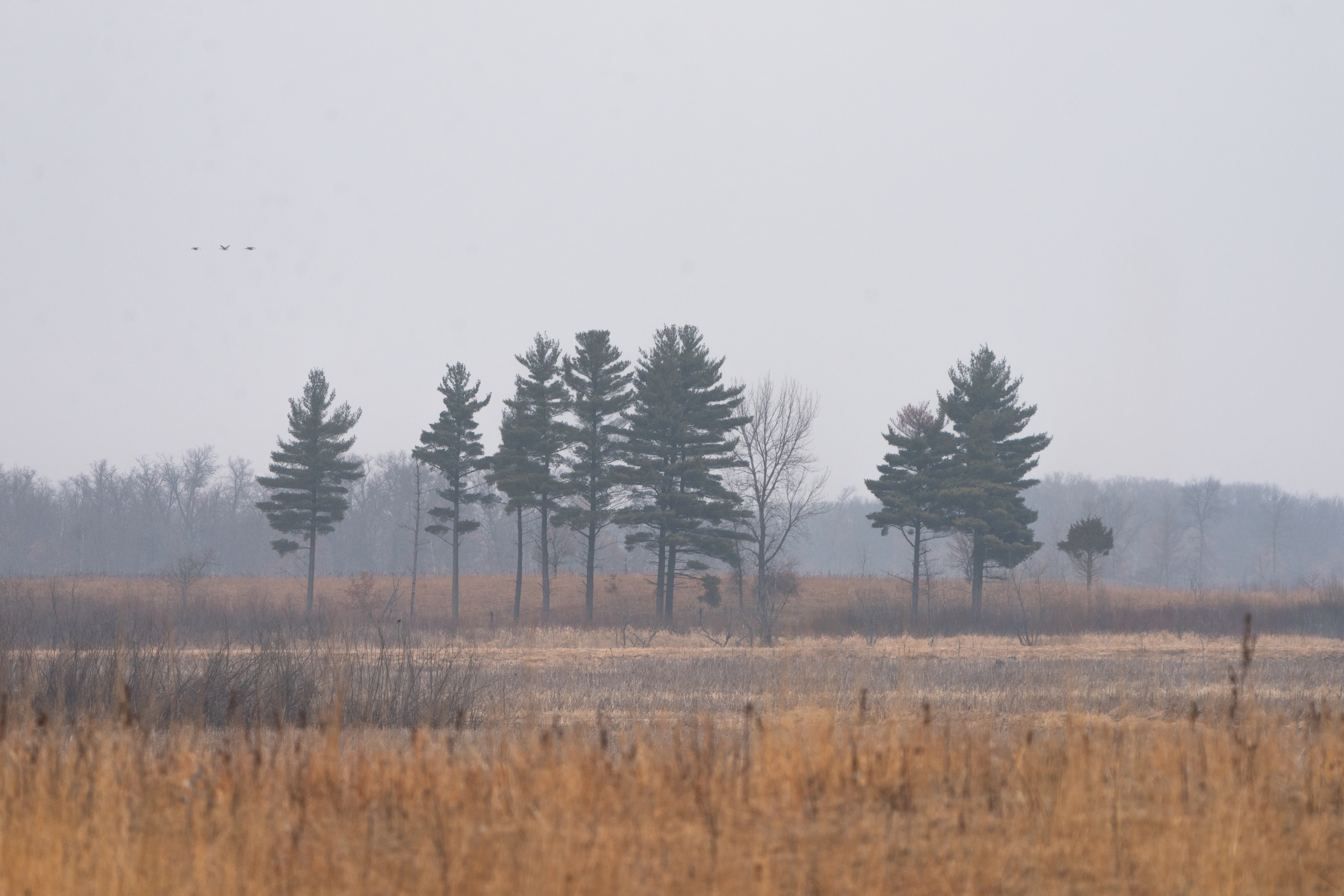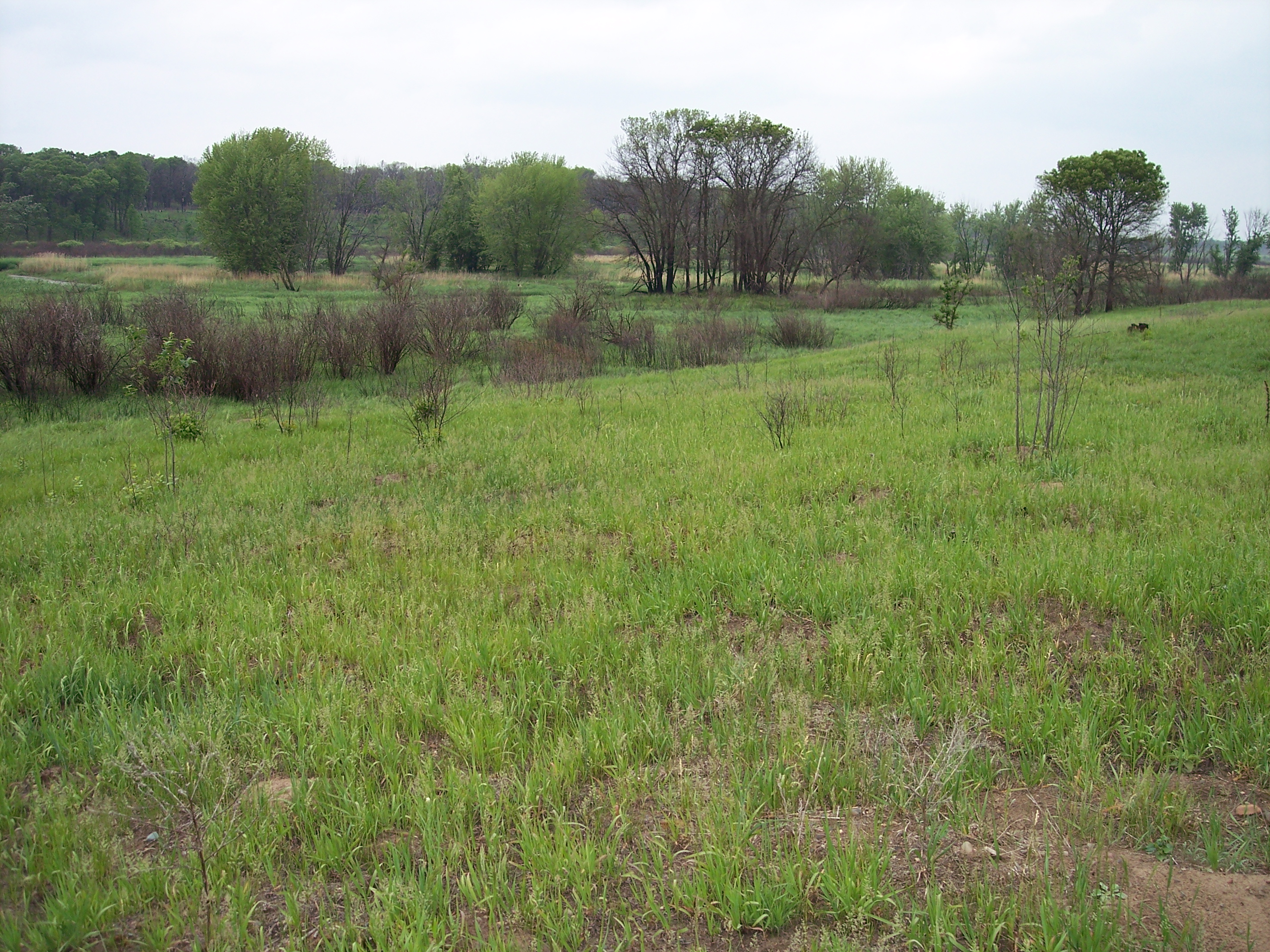Sherburne National Wildlife Refuge on:
[Wikipedia]
[Google]
[Amazon]
Sherburne National Wildlife Refuge is a National Wildlife Refuge of the United States in Sherburne County,
 Native American village sites dating back to 1300 CE have been found within the refuge, although the area is assumed to have been inhabited for much longer. The mixture of habitats and abundance of water bodies produced a large and diverse wildlife population. The first European settlers arrived in the 1870s. As land use was altered for agriculture, wildfire was suppressed and drainage ditches were cut. This had the effect of reducing the number of year-round wetlands and increasing the density of the wooded areas.
By the 1940s conservationists and sportsmen recognized the former quality of the area and its potential for restoration. Minnesota's conservation department investigated the possibility of creating a state wildlife area. It was ultimately conceded that the state simply did not have the funds to acquire the land from its nearly 300 separate owners, and in 1960 a formal request was made to the
Native American village sites dating back to 1300 CE have been found within the refuge, although the area is assumed to have been inhabited for much longer. The mixture of habitats and abundance of water bodies produced a large and diverse wildlife population. The first European settlers arrived in the 1870s. As land use was altered for agriculture, wildfire was suppressed and drainage ditches were cut. This had the effect of reducing the number of year-round wetlands and increasing the density of the wooded areas.
By the 1940s conservationists and sportsmen recognized the former quality of the area and its potential for restoration. Minnesota's conservation department investigated the possibility of creating a state wildlife area. It was ultimately conceded that the state simply did not have the funds to acquire the land from its nearly 300 separate owners, and in 1960 a formal request was made to the
 In winter most of the refuge lands are open for cross-country skiing, snowshoeing, and hiking. From March 1 to August 31 visitor access is restricted to the following areas so that wildlife can breed without disturbance.
* Prairie's Edge Wildlife Drive, which is open to automobiles, bicyclists, and hikers from late April through October. This gravel road loops through wetlands and prairie and features three observation decks and three short loop hikes.
* Blue Hill Trail, with three loops and a short spur to the top of Blue Hill, the highest point in the refuge.
* Mahnomen Trail, with another three interconnected loops through wooded uplands.
* Canoe route on a stretch of the St. Francis River and its tributary Battle Brook.
* Designated fishing access points.
Hikers can pick berries and mushrooms for personal consumption within 100 feet of the trails. Big game, small game, and waterfowl hunting seasons are held in the fall.
The entire refuge is for day-use only. Overnighting visitors are referred to a campground in the adjacent Sand Dunes State Forest.
In winter most of the refuge lands are open for cross-country skiing, snowshoeing, and hiking. From March 1 to August 31 visitor access is restricted to the following areas so that wildlife can breed without disturbance.
* Prairie's Edge Wildlife Drive, which is open to automobiles, bicyclists, and hikers from late April through October. This gravel road loops through wetlands and prairie and features three observation decks and three short loop hikes.
* Blue Hill Trail, with three loops and a short spur to the top of Blue Hill, the highest point in the refuge.
* Mahnomen Trail, with another three interconnected loops through wooded uplands.
* Canoe route on a stretch of the St. Francis River and its tributary Battle Brook.
* Designated fishing access points.
Hikers can pick berries and mushrooms for personal consumption within 100 feet of the trails. Big game, small game, and waterfowl hunting seasons are held in the fall.
The entire refuge is for day-use only. Overnighting visitors are referred to a campground in the adjacent Sand Dunes State Forest.
Sherburne National Wildlife Refuge
official website from the USFWS. {{authority control National Wildlife Refuges in Minnesota Protected areas of Sherburne County, Minnesota Protected areas established in 1965 Wetlands of Minnesota Landforms of Sherburne County, Minnesota
Minnesota
Minnesota () is a state in the upper midwestern region of the United States. It is the 12th largest U.S. state in area and the 22nd most populous, with over 5.75 million residents. Minnesota is home to western prairies, now given over to ...
. The refuge protects mixed habitat types including oak savanna
An oak savanna is a type of savanna—or lightly forested grassland—where oaks (''Quercus ''spp.) are the dominant trees. The terms "oakery" or "woodlands" are also used commonly, though the former is more prevalent when referencing the Medite ...
, Big Woods
Big Woods refers to a type of temperate hardwood forest ecoregion found in western Wisconsin and south-central Minnesota. "Big Woods" is a direct translation of the name given to the region by French explorers: .
Trees and native vegetation ...
, and wetland
A wetland is a distinct ecosystem that is flooded or saturated by water, either permanently (for years or decades) or seasonally (for weeks or months). Flooding results in oxygen-free (anoxic) processes prevailing, especially in the soils. The p ...
s. The St. Francis River flows through the eastern side of the park. Over 230 species of birds, 58 species of mammals, and 25 species of reptiles and amphibians have been recorded in the refuge.
History
 Native American village sites dating back to 1300 CE have been found within the refuge, although the area is assumed to have been inhabited for much longer. The mixture of habitats and abundance of water bodies produced a large and diverse wildlife population. The first European settlers arrived in the 1870s. As land use was altered for agriculture, wildfire was suppressed and drainage ditches were cut. This had the effect of reducing the number of year-round wetlands and increasing the density of the wooded areas.
By the 1940s conservationists and sportsmen recognized the former quality of the area and its potential for restoration. Minnesota's conservation department investigated the possibility of creating a state wildlife area. It was ultimately conceded that the state simply did not have the funds to acquire the land from its nearly 300 separate owners, and in 1960 a formal request was made to the
Native American village sites dating back to 1300 CE have been found within the refuge, although the area is assumed to have been inhabited for much longer. The mixture of habitats and abundance of water bodies produced a large and diverse wildlife population. The first European settlers arrived in the 1870s. As land use was altered for agriculture, wildfire was suppressed and drainage ditches were cut. This had the effect of reducing the number of year-round wetlands and increasing the density of the wooded areas.
By the 1940s conservationists and sportsmen recognized the former quality of the area and its potential for restoration. Minnesota's conservation department investigated the possibility of creating a state wildlife area. It was ultimately conceded that the state simply did not have the funds to acquire the land from its nearly 300 separate owners, and in 1960 a formal request was made to the United States Fish and Wildlife Service
The United States Fish and Wildlife Service (USFWS or FWS) is an agency within the United States Department of the Interior dedicated to the management of fish, wildlife, and natural habitats. The mission of the agency is "working with othe ...
to consider the site for federal protection. This was formally approved on May 18, 1965, and purchase of refuge lands was begun with revenue from the sale of duck stamps
The Federal Duck Stamp, formally known as the Migratory Bird Hunting and Conservation Stamp, is an adhesive stamp issued by the United States federal government that must be purchased prior to hunting for migratory waterfowl such as ducks and gee ...
.
Recreation
 In winter most of the refuge lands are open for cross-country skiing, snowshoeing, and hiking. From March 1 to August 31 visitor access is restricted to the following areas so that wildlife can breed without disturbance.
* Prairie's Edge Wildlife Drive, which is open to automobiles, bicyclists, and hikers from late April through October. This gravel road loops through wetlands and prairie and features three observation decks and three short loop hikes.
* Blue Hill Trail, with three loops and a short spur to the top of Blue Hill, the highest point in the refuge.
* Mahnomen Trail, with another three interconnected loops through wooded uplands.
* Canoe route on a stretch of the St. Francis River and its tributary Battle Brook.
* Designated fishing access points.
Hikers can pick berries and mushrooms for personal consumption within 100 feet of the trails. Big game, small game, and waterfowl hunting seasons are held in the fall.
The entire refuge is for day-use only. Overnighting visitors are referred to a campground in the adjacent Sand Dunes State Forest.
In winter most of the refuge lands are open for cross-country skiing, snowshoeing, and hiking. From March 1 to August 31 visitor access is restricted to the following areas so that wildlife can breed without disturbance.
* Prairie's Edge Wildlife Drive, which is open to automobiles, bicyclists, and hikers from late April through October. This gravel road loops through wetlands and prairie and features three observation decks and three short loop hikes.
* Blue Hill Trail, with three loops and a short spur to the top of Blue Hill, the highest point in the refuge.
* Mahnomen Trail, with another three interconnected loops through wooded uplands.
* Canoe route on a stretch of the St. Francis River and its tributary Battle Brook.
* Designated fishing access points.
Hikers can pick berries and mushrooms for personal consumption within 100 feet of the trails. Big game, small game, and waterfowl hunting seasons are held in the fall.
The entire refuge is for day-use only. Overnighting visitors are referred to a campground in the adjacent Sand Dunes State Forest.
References
*U.S. Fish and Wildlife Service. Sherburne National Wildlife Refuge signage, brochures, and website.External links
Sherburne National Wildlife Refuge
official website from the USFWS. {{authority control National Wildlife Refuges in Minnesota Protected areas of Sherburne County, Minnesota Protected areas established in 1965 Wetlands of Minnesota Landforms of Sherburne County, Minnesota